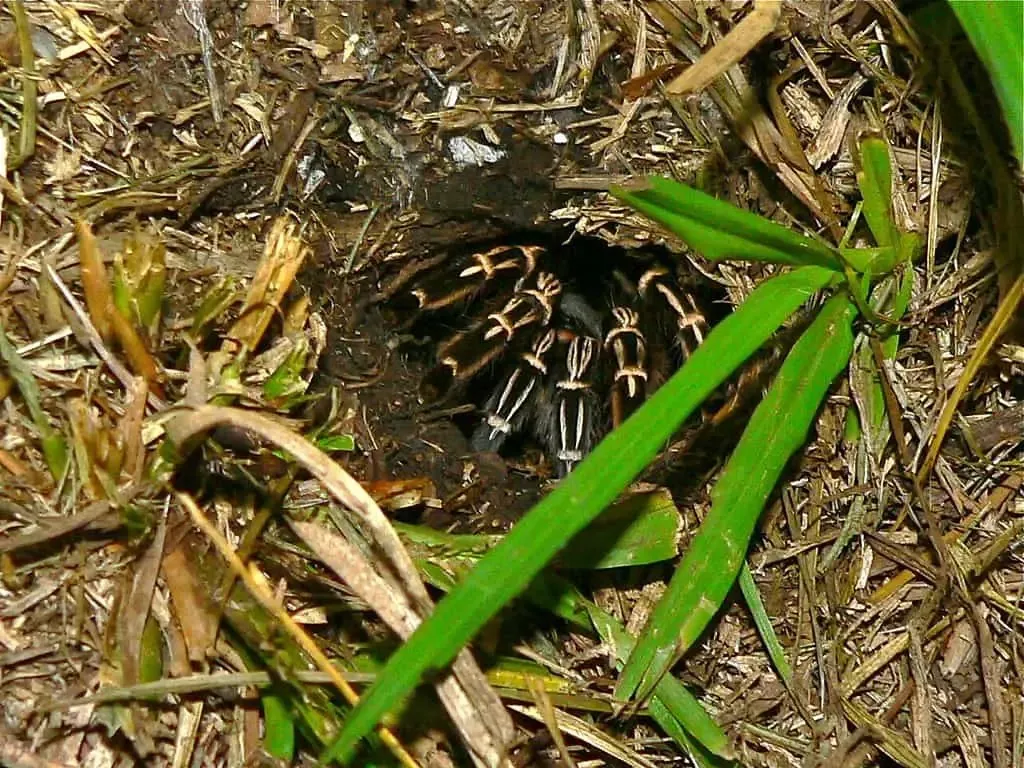Exploring Costa Rican Cuisine
Costa Rican cuisine, often referred to as “Tico” food, is a delightful blend of fresh ingredients, bold flavors, and traditional cooking methods. The cuisine is influenced by the country’s rich biodiversity and cultural heritage, with indigenous, Spanish, and African influences. Ticos prioritize fresh, local produce, resulting in dishes that are both flavorful and healthy. From the Caribbean coast to the Pacific, and from the central valley to the northern plains, you’ll find distinct regional variations, each reflecting the unique ingredients and traditions of the area. A trip to Costa Rica is not complete without exploring its culinary offerings, it’s as captivating as its natural beauty, offering a true taste of the pura vida lifestyle. This culinary journey celebrates the simplicity, freshness, and vibrant flavors that define Costa Rican food.
Gallo Pinto The National Dish
Gallo Pinto, the national dish of Costa Rica, is a staple breakfast item, but it’s also enjoyed throughout the day. This flavorful dish is a simple yet satisfying combination of rice and black beans, cooked with onions, bell peppers, cilantro, and a secret ingredient – Salsa Lizano, a unique Costa Rican condiment that adds a distinctive tangy flavor. It’s a testament to the Costa Rican approach to food simple ingredients, expertly combined, can create a truly memorable dish. The dish is typically served with eggs, fried plantains, sour cream, and often with tortillas. The simplicity of Gallo Pinto belies its depth of flavor, making it a beloved dish for locals and visitors alike, and a perfect introduction to the heart of Costa Rican cuisine. The combination of textures and tastes is a perfect start to the day.
Ingredients and Preparation

The preparation of Gallo Pinto is relatively straightforward, but the quality of the ingredients and the cooking technique are key to its success. The rice and beans are cooked separately, the beans are cooked with onions, bell peppers, garlic, and cilantro until tender, and the rice is cooked to perfection. The cooked rice and beans are then combined and fried in a pan with the sofrito. Salsa Lizano is added at the end to enhance the flavor. The dish is cooked slowly, allowing the flavors to meld together. Freshly cooked rice and beans are crucial for the texture and taste. This creates a savory dish that is greater than the sum of its parts, showcasing the magic of Costa Rican cooking. This ensures every bite is flavorful.
Flavor Profile and Variations
The flavor profile of Gallo Pinto is a harmonious blend of savory, slightly tangy, and subtly sweet notes. The earthiness of the black beans is balanced by the freshness of the cilantro and the subtle sweetness of the peppers. Salsa Lizano adds a unique tang, contributing to the dish’s distinctiveness. While the basic recipe remains consistent, there are regional variations. Some cooks add a touch of Worcestershire sauce, or a bit of chili for added heat. Some versions include finely chopped vegetables like carrots or celery. The true beauty of Gallo Pinto is its versatility and the way it reflects the tastes of its creators. Whatever the variation, Gallo Pinto is a dish that embodies the pura vida spirit a celebration of simple pleasures.
Casado A Complete Meal
Casado, meaning “married” in Spanish, is a classic Costa Rican lunch or dinner. It’s a complete meal that includes several components served together, making it both filling and flavorful. This meal reflects the Costa Rican emphasis on balanced nutrition and provides a variety of textures and tastes. The casado is a culinary symbol of family and community, often enjoyed with loved ones. The assortment of ingredients ensures a diverse range of flavors and nutrients, giving you the energy to enjoy the day. It is a delicious way to experience the local culture and traditions. When you order a casado, you are experiencing a genuine taste of Costa Rican comfort food.
Components of Casado

The components of Casado typically include rice, black beans, a protein (usually grilled chicken, fish, beef, or pork), a salad (usually cabbage, tomato, and cucumber), fried plantains, and sometimes a side of pasta or a small serving of French fries. The protein choice varies depending on regional preferences, but always is prepared with simple seasonings. The combination of rice and beans provides a base of carbohydrates and protein, while the salad adds freshness and vitamins. Plantains offer a touch of sweetness and a delightful texture. The variety of components ensures that Casado is not only delicious but also a nutritionally balanced meal. Each component complements the others.
Regional Differences and Variations
While the core components of Casado remain consistent, regional differences exist. The choice of protein can vary widely depending on local availability and preferences. Some regions might feature a specific type of fish, while others might highlight beef or chicken. The salad ingredients can vary, with some versions including avocado, while others might feature different types of greens. The cooking methods also vary, with some cooks grilling the meat over an open fire, while others might prefer to pan-fry it. In coastal regions, you’ll find casados with fresh seafood, while in the highlands, you might encounter heartier meat dishes. These regional variations showcase the diversity of Costa Rican cuisine.
Sopa Negra A Hearty Black Bean Soup
Sopa Negra, or black bean soup, is a staple in Costa Rican cuisine, often enjoyed as a starter or a light meal. It’s a simple yet satisfying soup that reflects the country’s focus on fresh ingredients and traditional cooking methods. The soup’s hearty texture and rich flavor make it a popular choice year-round, providing warmth and comfort. This flavorful dish embodies the essence of Costa Rican cooking, offering a taste of home for locals and a comforting experience for visitors. Its simplicity is its charm, with each ingredient contributing to the overall depth of flavor.
Ingredients and Preparation

The ingredients for Sopa Negra are simple and readily available: black beans, onions, bell peppers, garlic, cilantro, and often a boiled egg and a slice of avocado for garnish. The black beans are cooked until tender, and the vegetables are sautéed to add depth of flavor. The soup is then seasoned with salt and pepper, and sometimes a touch of cumin or other spices. The preparation is straightforward, emphasizing the importance of fresh, high-quality ingredients. The egg, often lightly boiled or poached, and the creamy avocado provide a contrasting textures and flavors that enhances the soup. The slow cooking method allows flavors to meld together, creating a deeply satisfying soup.
Serving Suggestions and Accompaniments
Sopa Negra is often served with a side of rice, which can be added directly to the soup or served alongside. A squeeze of lime juice adds a touch of acidity and brightens the flavors. It is also a wonderful accompaniment to other Costa Rican dishes, such as tortillas or empanadas. The warm and comforting nature of the soup makes it a perfect starter for a meal. Some variations include a dollop of sour cream or a sprinkle of fresh cilantro. The combination of the soup, rice, lime juice, and any additional accompaniments creates a well-rounded and delicious meal. Enjoying Sopa Negra is a true Costa Rican culinary experience.
Arroz con Pollo Rice with Chicken
Arroz con Pollo, or rice with chicken, is a beloved dish across Latin America, and the Costa Rican version is no exception. It’s a comforting, one-pot meal that’s easy to prepare and incredibly flavorful. The dish is a great example of how simple ingredients can be transformed into a delicious and satisfying meal. The combination of chicken, rice, vegetables, and spices creates a symphony of flavors and textures that everyone will enjoy. This dish is a perfect illustration of Costa Rican cuisine, celebrating fresh ingredients and simple, delicious cooking.
Classic Recipe

The classic Arroz con Pollo recipe typically includes chicken (often cut into pieces), rice, vegetables such as bell peppers, onions, carrots, and peas, and a blend of spices. The chicken is usually browned first, then the vegetables are sautéed to release their flavors. Rice is added, along with chicken broth or water, and the dish simmers until the rice is cooked and the chicken is tender. Spices like saffron, achiote, or turmeric are used to give the dish its characteristic yellow color and aromatic flavor. The rice absorbs the flavors of the chicken and vegetables, creating a harmonious blend of tastes. It’s a hearty and flavorful meal.
Serving Styles
Arroz con Pollo can be served in many ways. It’s often presented as a single-pot dish, with the chicken and rice mixed together. Some people prefer to serve the chicken on top of the rice, allowing each person to portion it according to their preference. It can be garnished with fresh cilantro or parsley for added flavor and visual appeal. In Costa Rica, Arroz con Pollo is often served with a side of salad, fried plantains, or avocado slices, providing a complete and balanced meal. The simplicity of the dish allows for many variations to suit individual tastes, making it a favorite for families and restaurants alike. This flexibility makes it a versatile and popular choice.
Chifrijo A Popular Bar Snack
Chifrijo is a popular Costa Rican bar snack, often enjoyed while socializing and enjoying drinks. The name is a combination of its main ingredients: chicharrón (fried pork), frijoles (beans), and arroz (rice). This flavorful and hearty dish is a culinary representation of Costa Rican culture, showcasing simple ingredients combined in a delicious way. It’s a staple in many local bars and restaurants, and a perfect example of the country’s casual and welcoming dining atmosphere. Chifrijo is not just food, it’s a social experience, perfect for sharing with friends.
Ingredients and Preparation

Chifrijo consists of layers of ingredients served in a bowl or glass. The bottom layer usually has rice, topped with beans, followed by the chicharrón, which is crispy fried pork. It often includes a fresh pico de gallo-style salsa (made with tomatoes, onions, cilantro, and lime juice) and avocado. The dish is prepared by combining these components. Each ingredient contributes its unique flavor and texture to the experience. The chicharrón provides a satisfying crunch, while the beans offer a creamy base, and the salsa adds a fresh, tangy element. The balance of these components results in an unforgettable dish. This layered approach maximizes flavor and provides a delightful textural experience.
Variations and Local Favorites
Variations of Chifrijo can be found throughout Costa Rica, with some regions adding their own unique touches. Sometimes, the chicharrón is replaced with other meats, such as grilled pork or even chicken. Some versions include a layer of french fries for added texture and flavor. The specific type of beans used can also vary, with some preferring black beans and others using red beans. The type of salsa can also differ, with variations in the amount of spice or the addition of other ingredients. Despite these differences, the basic concept of Chifrijo remains the same. This makes it an enjoyable culinary adventure. It represents the creativity of Costa Rican cooks.
Tamales A Festive Delight
Tamales, a Mesoamerican staple, are an integral part of Costa Rican cuisine, particularly during the holidays. These savory bundles of corn dough (masa) are filled with a variety of ingredients, wrapped in banana leaves, and then steamed. The preparation of tamales is a communal activity, often done with families and friends. This cooking method infuses the contents with a distinct flavor. They represent a rich cultural heritage. Their presence at celebrations emphasizes their significance. Eating tamales in Costa Rica is a true cultural experience.
Traditional Preparation

The traditional preparation of Costa Rican tamales involves making the masa dough from corn flour, water, and lard, which gives it its characteristic texture. The filling typically includes pork, chicken, or a combination of both, along with rice, vegetables, and spices. The filling is placed on a layer of masa, wrapped in banana leaves, and then steamed for several hours until cooked. The aroma that fills the air during the steaming process is a significant aspect of the experience. This method ensures the filling remains tender and flavorful. The time-consuming process reflects the importance of tamales. This makes them a symbol of tradition.
Holiday Significance and Variations
Tamales hold a special place in Costa Rican culture, particularly during Christmas and other holidays. They are often prepared in large quantities and shared with family and friends, reflecting the community spirit. While the traditional recipe involves pork and chicken fillings, there are also vegetarian variations that include beans, vegetables, and cheese. The size and shape of the tamales can also vary. Regional differences in the fillings and spices used create unique variations. Enjoying Tamales is more than just enjoying a meal. It’s a way of connecting with tradition and sharing in the joy of the season. These variations showcase the versatility of the dish, while maintaining its cultural significance.
